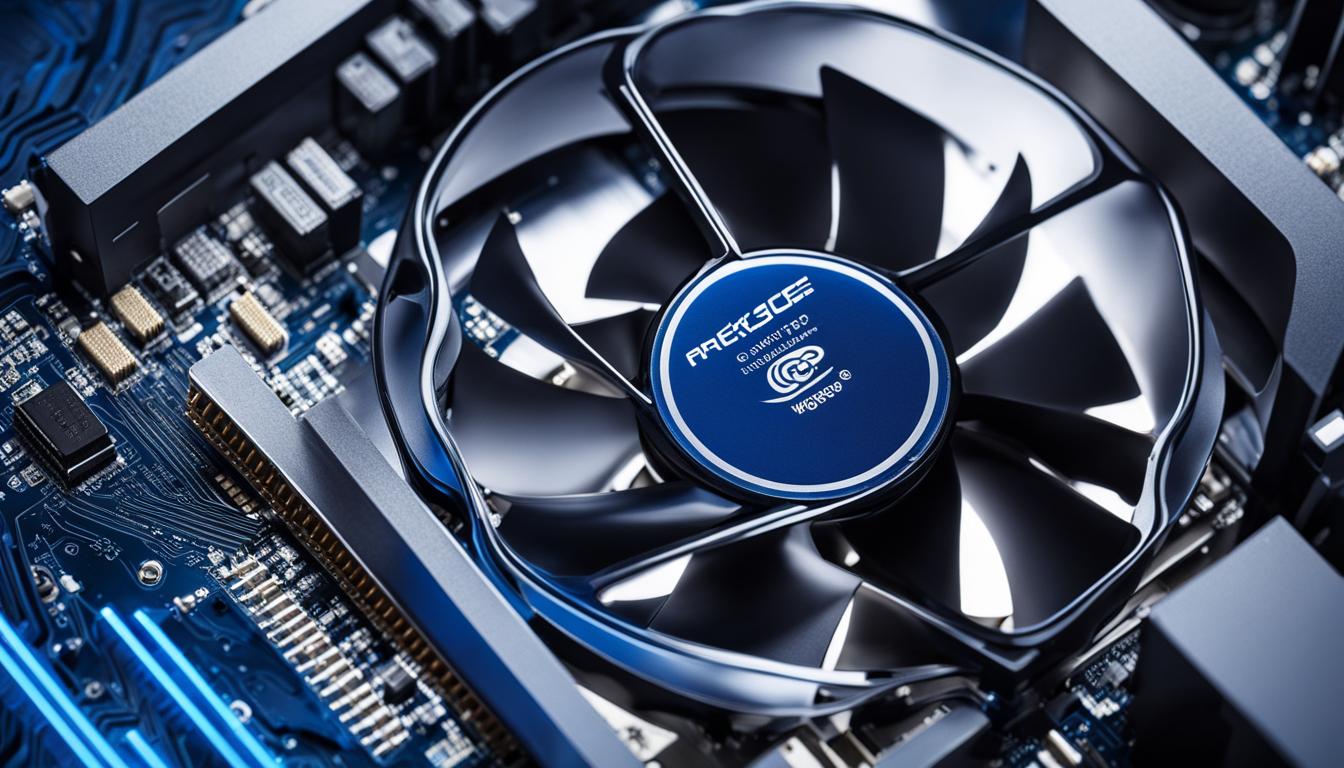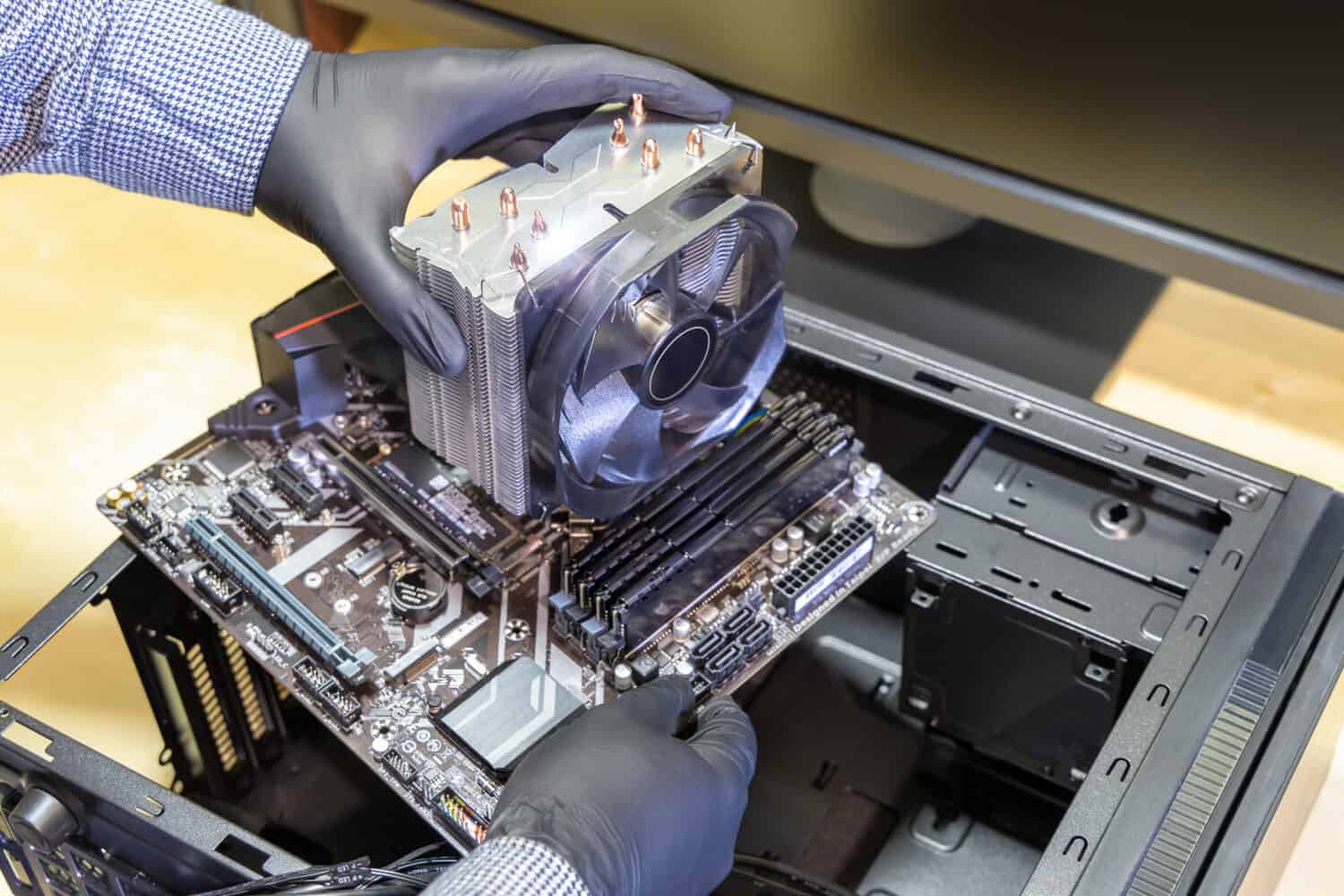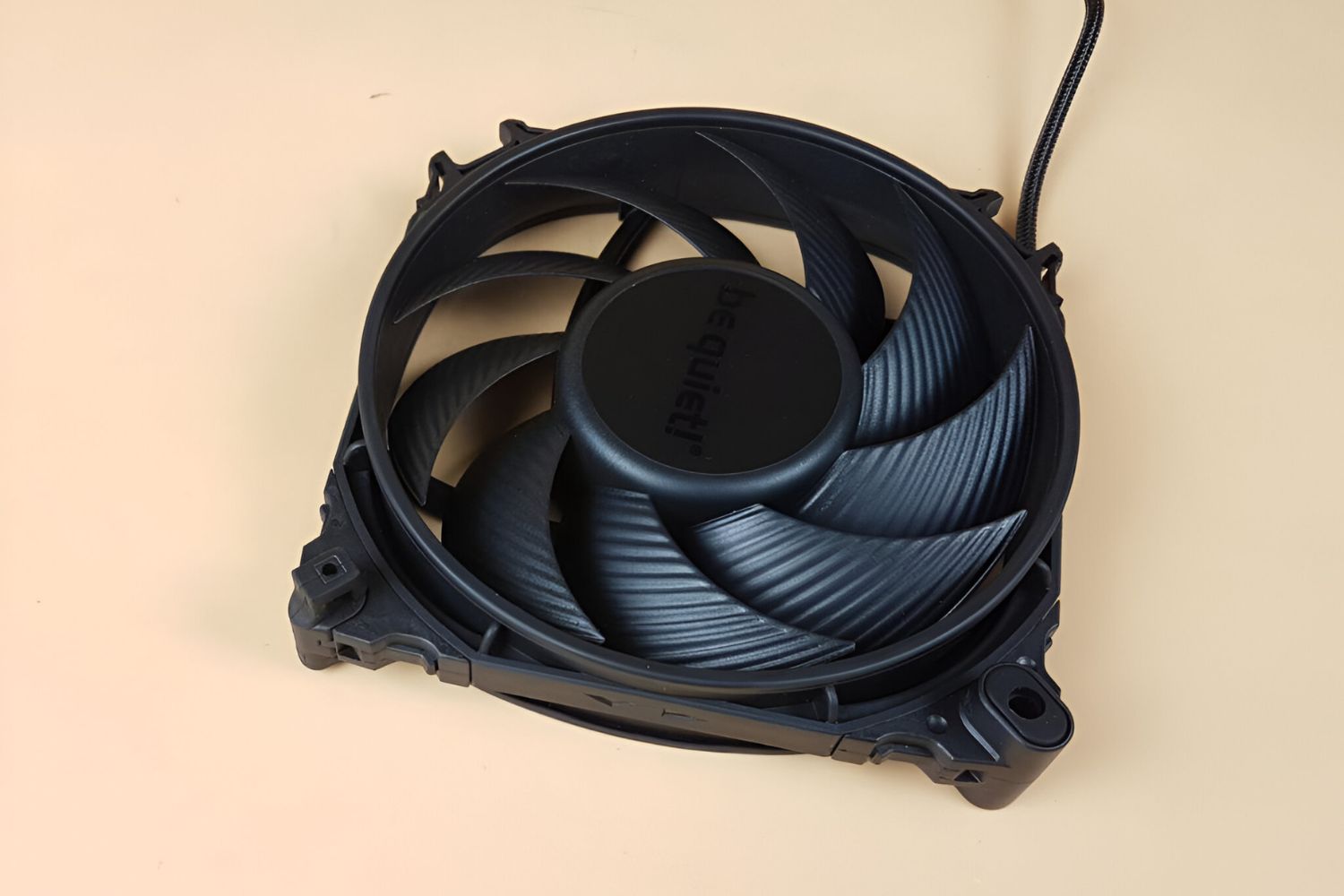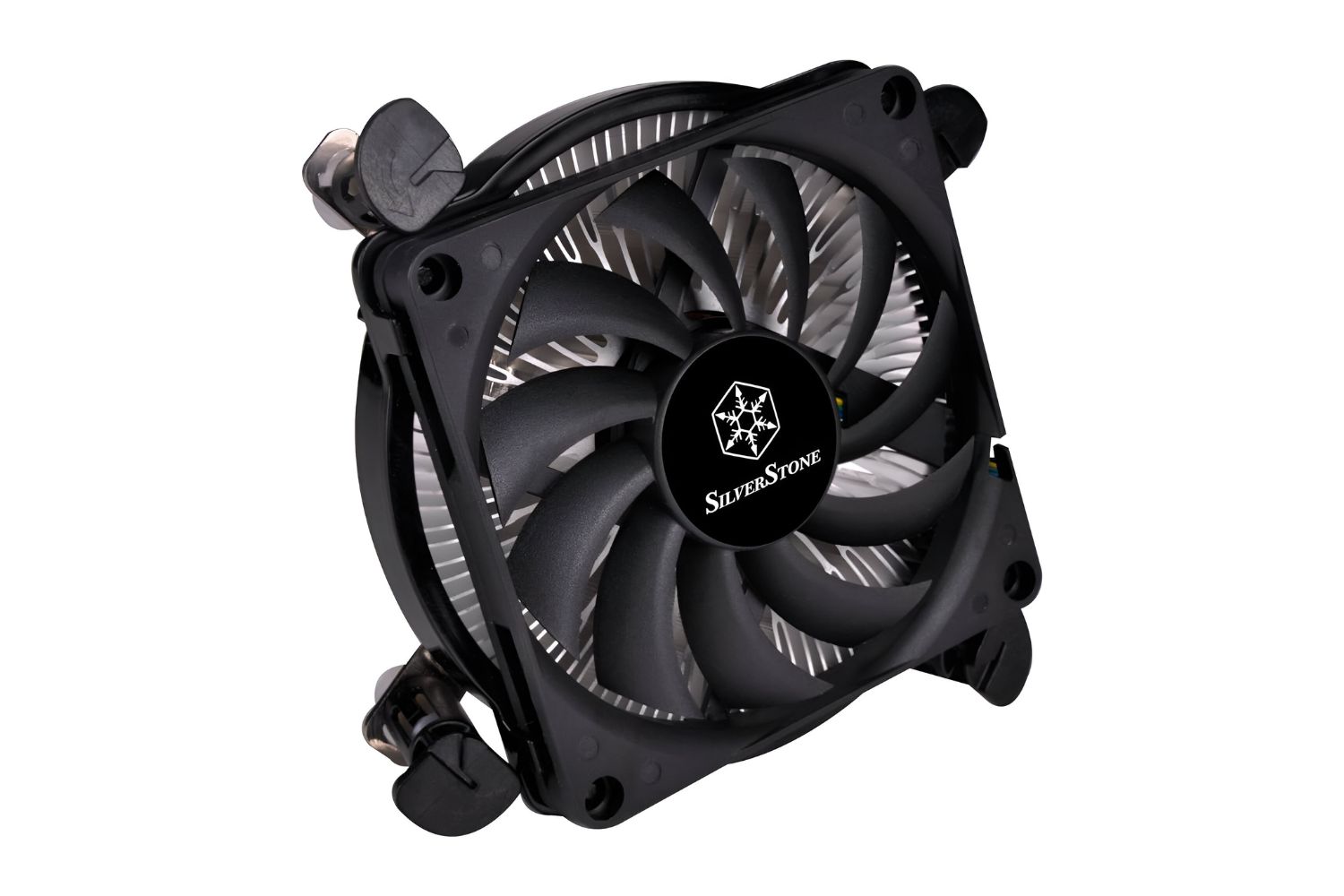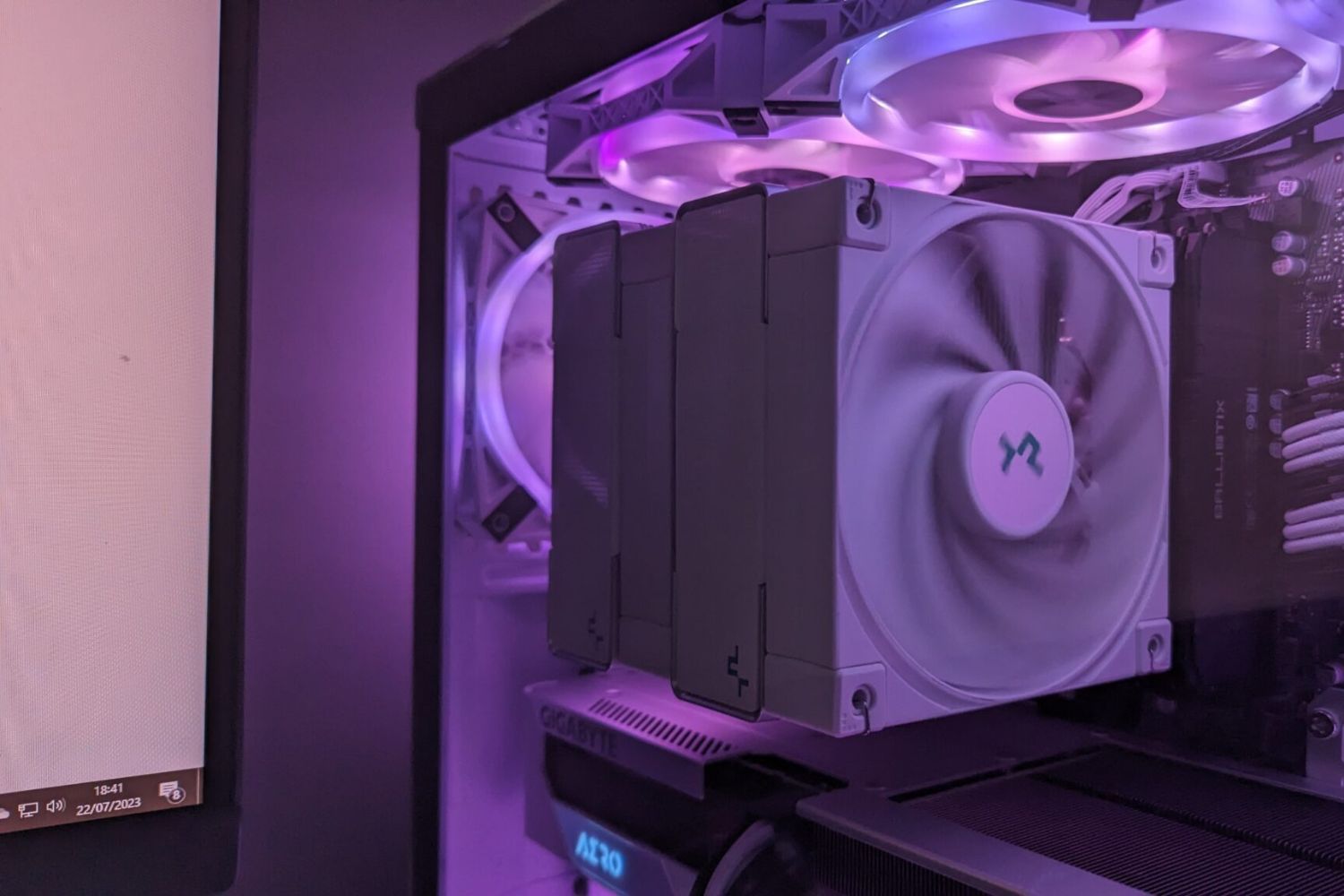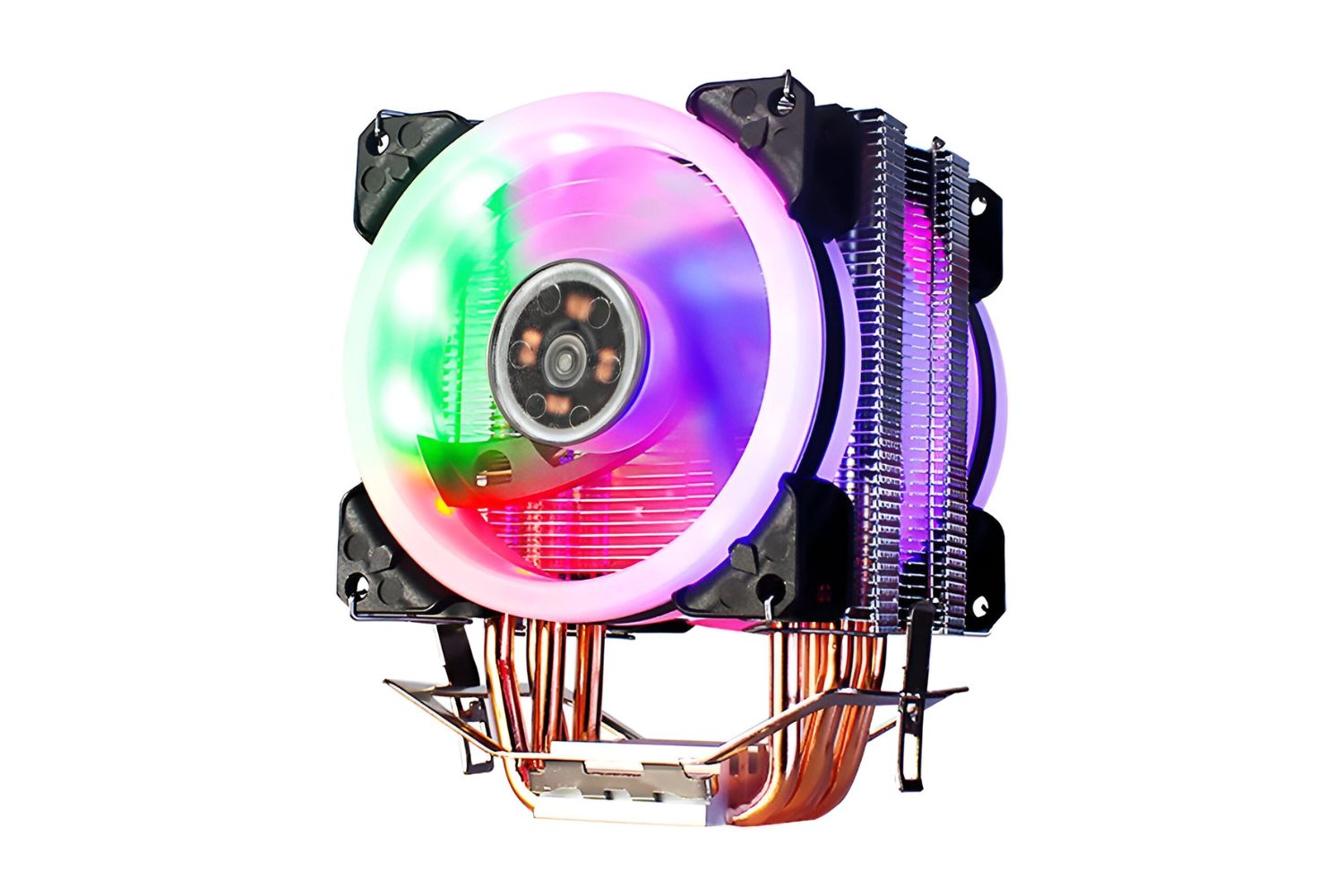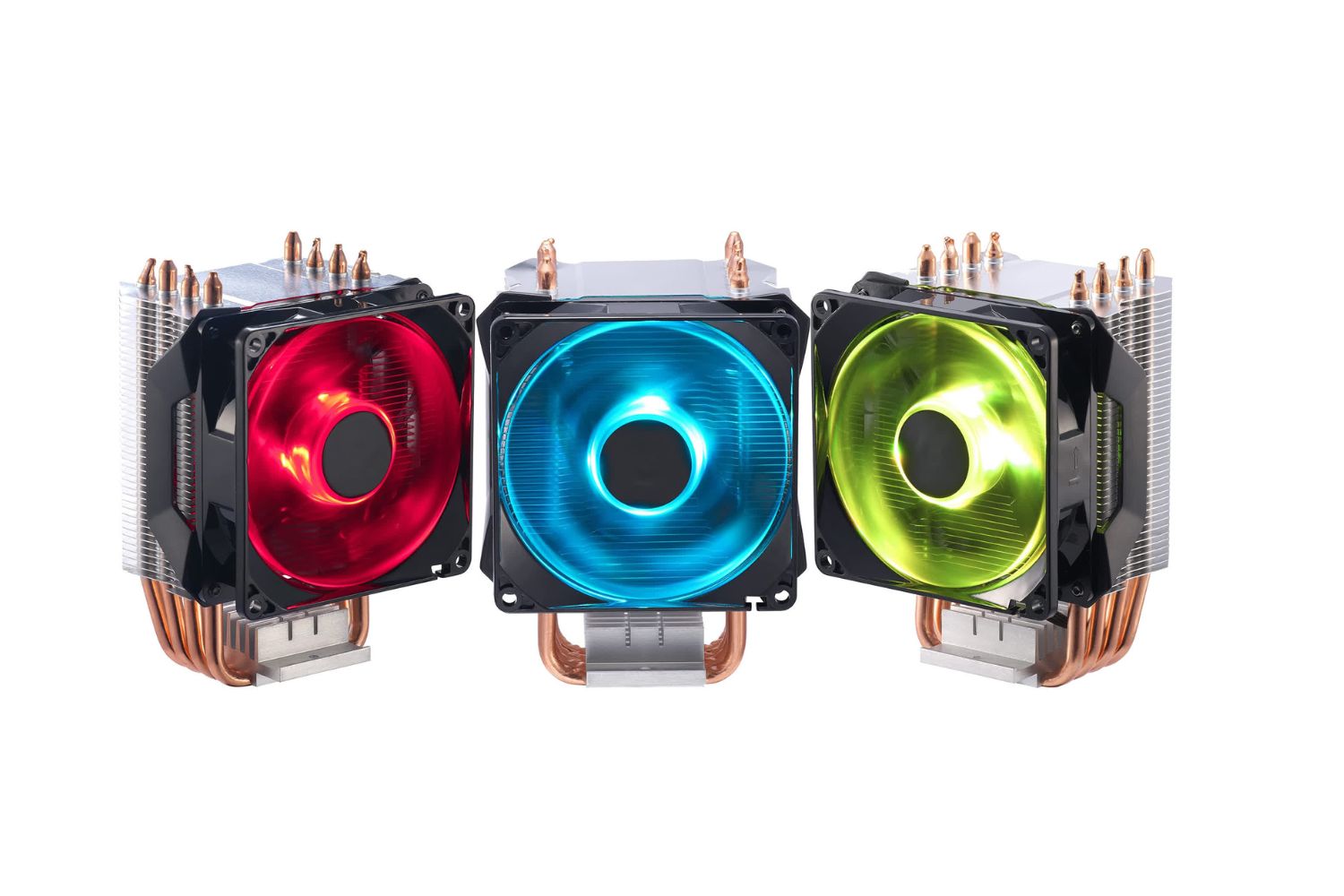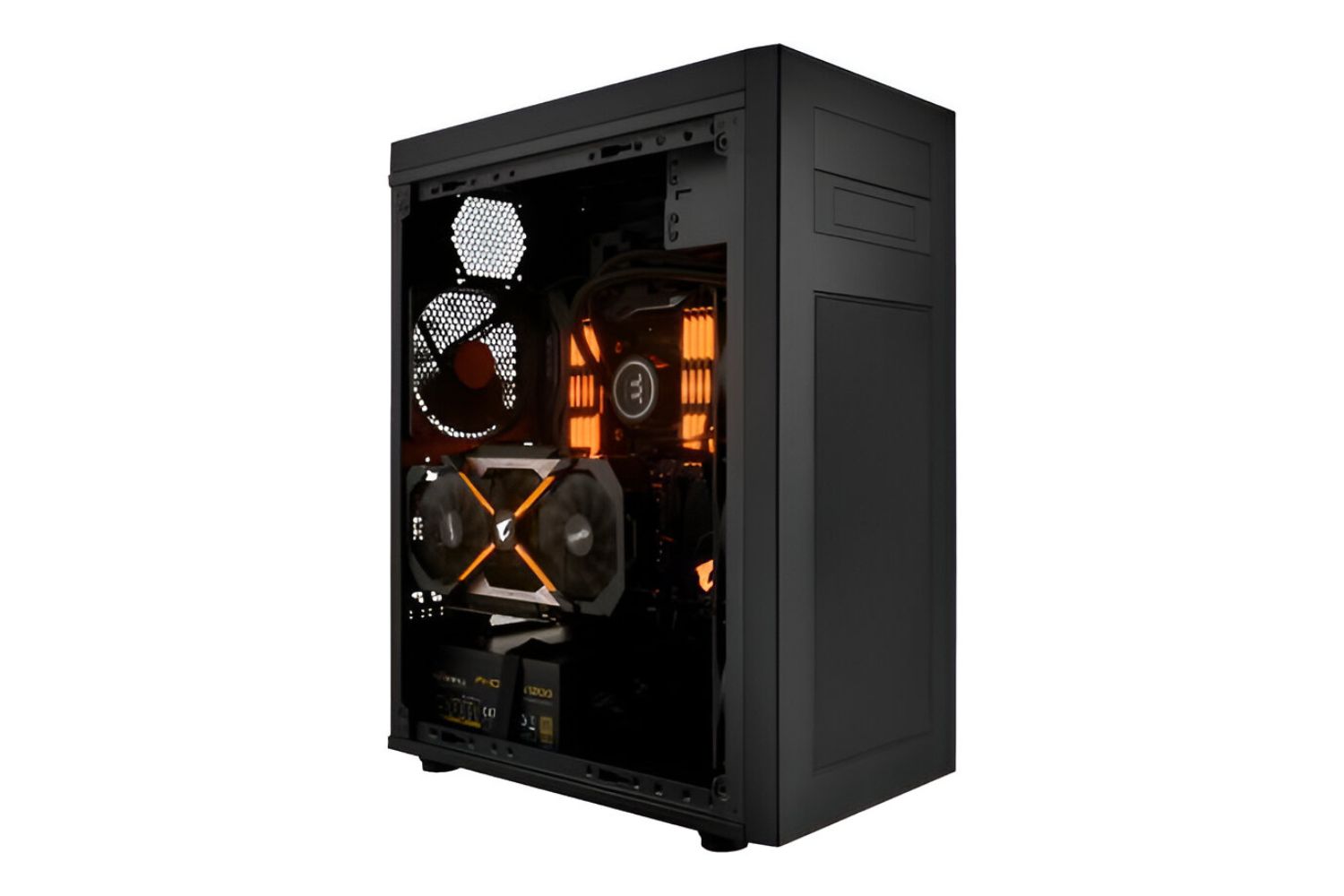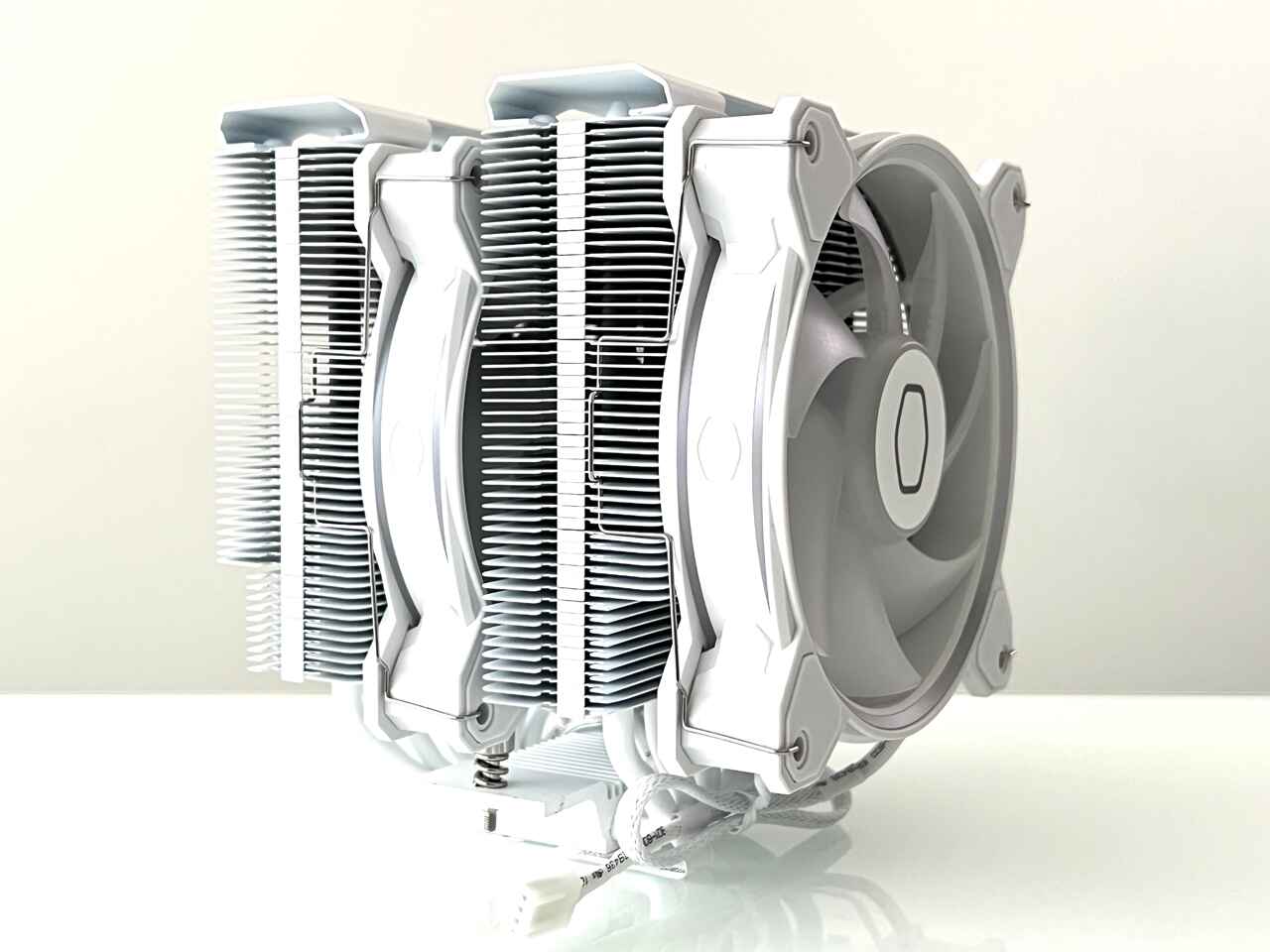Introduction
Are you wondering how to find the right CPU cooler for your computer? Look no further! In this article, we will guide you through the process of selecting a CPU cooler that suits your needs.
A CPU cooler is a vital component of any computer system. It helps to dissipate the heat generated by the central processing unit (CPU), preventing overheating and ensuring optimal performance. Without a proper CPU cooler, your computer may experience frequent crashes, reduced lifespan of components, and even permanent damage to your valuable data.
Choosing the right CPU cooler can be a challenging task, especially with the wide variety of options available in the market. From air coolers to liquid coolers, each type has its strengths and limitations. Additionally, compatibility with your CPU socket and case size is crucial for a hassle-free installation.
In this article, we will break down the process of finding the perfect CPU cooler into manageable steps. We will discuss the different types of CPU coolers, factors to consider when making your choice, how to determine your CPU socket type, and how to measure your case’s clearance. By the end of this article, you will have the knowledge and confidence to choose the most suitable CPU cooler for your system.
So let’s dive in and discover everything you need to know about finding the right CPU cooler!
What is a CPU Cooler?
A CPU cooler is a crucial component in a computer system that is responsible for regulating the temperature of the central processing unit (CPU). As the CPU performs various tasks and processes, it generates heat, and without a proper cooling solution in place, the CPU can quickly overheat, leading to a range of problems.
The primary function of a CPU cooler is to dissipate the heat generated by the CPU and maintain it at an optimal operating temperature. This is achieved through a combination of cooling methods, such as heat sinks, fans, and in some cases, liquid cooling systems.
The most common type of CPU cooler is the air cooler. Air coolers typically consist of a heat sink, which is made up of numerous metal fins, and one or more fans that blow air across the fins to dissipate heat. The heat generated by the CPU is transferred to the heat sink through a thermal interface material, usually thermal paste, and the heat sink’s large surface area facilitates the dissipation of heat into the surrounding environment.
In addition to air coolers, there are also liquid cooling solutions available for CPUs. Liquid coolers, also known as “all-in-one” or AIO coolers, use a closed-loop system that circulates liquid, usually a mix of water and coolant, to absorb and carry away heat from the CPU. The heated liquid is then cooled by a radiator and fan before being recirculated.
Another type of liquid cooling, known as custom loop liquid cooling, involves a more complex setup where users can design a custom cooling system with separate components, such as water blocks, pumps, reservoirs, and radiators. This type of cooling offers even better performance and customization options but requires more expertise and maintenance.
Overall, a CPU cooler is a vital component for maintaining the optimal operating temperature of your CPU. By keeping the CPU cool, the cooler helps to improve system stability, prolong CPU lifespan, and enable efficient performance during demanding tasks such as gaming, video editing, and complex calculations.
Why Do You Need a CPU Cooler?
A CPU cooler is not just a luxury but a necessity for anyone using a computer, especially if you engage in resource-intensive tasks such as gaming, video editing, or running complex software. Here are a few reasons why you need a CPU cooler:
- Prevents overheating: The CPU is one of the most crucial and heat-generating components in a computer system. Without proper cooling, the CPU can quickly overheat, leading to a range of problems such as system instability, crashes, and potential permanent damage to the CPU.
- Optimizes performance: When a CPU operates at elevated temperatures, it can throttle its performance to prevent damage. By keeping the CPU cool, a CPU cooler ensures that the processor can operate at its intended speed and deliver optimal performance even during demanding tasks.
- Improves system stability: Overheating can cause system instability, leading to frequent crashes, freezes, and unexpected shutdowns. By maintaining a lower temperature, a CPU cooler helps to stabilize the system, allowing for smoother and more reliable operation.
- Prolongs component lifespan: Excessive heat can significantly shorten the lifespan of computer components, particularly the CPU. By keeping the CPU cool, a CPU cooler helps to mitigate the effects of heat-related wear and tear, resulting in a longer lifespan for your expensive hardware.
- Reduces noise levels: While cooling solutions like fans do generate noise, a CPU cooler can help manage and reduce overall noise levels by effectively dissipating heat. This is especially true for high-quality CPU coolers that offer better airflow and quieter fan operation.
Whether you’re a casual computer user or an avid gamer, investing in a reliable CPU cooler is essential for the long-term health and performance of your computer. With the right CPU cooler in place, you can enjoy enhanced system stability, prolonged component lifespan, improved performance, and peace of mind knowing that your CPU is operating under optimal conditions.
How to Determine Your CPU Socket Type
Before you can choose a compatible CPU cooler, it’s crucial to determine your CPU socket type. The CPU socket is the physical interface on the motherboard where the CPU is installed. Different CPU sockets have specific dimensions and pin configurations, which means not all CPU coolers are compatible with all socket types. Here are some steps to help you determine your CPU socket type:
- Consult your motherboard manual: The easiest way to find your CPU socket type is by referring to your motherboard’s manual. The manual should provide detailed information about the motherboard’s specifications, including the CPU socket type it supports.
- Check the motherboard’s manufacturer website: If you don’t have access to the manual or have misplaced it, you can visit the manufacturer’s website and search for your motherboard model. The product page should contain information about the CPU socket type.
- Use CPU identification software: There are various software tools available online that can identify your CPU socket type. Programs like CPU-Z or Speccy can provide detailed information about your CPU, including the socket type.
- Physically inspect the CPU socket: If none of the previous methods work or you prefer a hands-on approach, you can physically inspect the CPU socket. Turn off your computer, unplug the power cord, and open the side panel to access the motherboard. Locate the CPU socket, which is typically a square or rectangular area with numerous small holes or pins. Take note of any labels or markings near the socket and search for them online for identification.
By following these steps, you should be able to determine your CPU socket type accurately. Once you know your CPU socket, you can then proceed to choose a compatible CPU cooler that fits your specific socket type, ensuring a proper and secure installation.
Factors to Consider When Choosing a CPU Cooler
Choosing the right CPU cooler is crucial to ensure optimal cooling performance and compatibility with your system. Here are some important factors to consider when selecting a CPU cooler:
- CPU TDP (Thermal Design Power): The CPU’s TDP refers to the maximum amount of heat that the CPU generates and needs to dissipate. It is important to choose a CPU cooler with a TDP rating that matches or exceeds your CPU’s TDP to ensure efficient cooling.
- Type of Cooling: There are different types of CPU coolers available, including air coolers, all-in-one (AIO) liquid coolers, and custom loop liquid coolers. Consider the advantages and limitations of each type, such as cooling performance, noise levels, installation complexity, and maintenance requirements.
- Noise Level: CPU coolers with larger fans or better airflow designs can provide effective cooling while operating at lower noise levels. If a quiet computing experience is important to you, consider choosing a CPU cooler that offers a quieter fan operation.
- Cooler Size and Clearance: Ensure that the CPU cooler you choose fits within the dimensions of your computer case. Check for compatibility and clearance issues, especially if you have a smaller form factor case or components obstructing the cooler’s installation space.
- CPU Cooler Height: Verify the maximum height allowance for CPU coolers in your case. This will help you choose a cooler that does not interfere with components like side panel fans or memory modules.
- Overclocking Capability: If you plan to overclock your CPU for enhanced performance, ensure that the CPU cooler you choose can handle the increased heat generated by the overclocked CPU. Look for coolers with higher heat dissipation capabilities.
- Budget: Determine your budget and find a CPU cooler that offers a good balance of performance and value within your price range. Keep in mind that higher-end coolers typically offer better cooling performance and quieter operation.
- Compatibility: Check the compatibility of the CPU cooler with your CPU socket type. Ensure that the cooler’s mounting mechanism aligns with the retention mechanism on your motherboard.
Considering these factors will help you choose a CPU cooler that meets your specific requirements and ensures the efficient cooling and longevity of your CPU. Take the time to research and compare different options to make an informed decision that best suits your needs and budget.
Different Types of CPU Coolers
When it comes to CPU cooling solutions, there are several types available, each with its own advantages and limitations. Understanding these different types and their characteristics will help you make an informed decision when choosing a CPU cooler for your system. Here are the main types of CPU coolers:
- Air Coolers: Air coolers are the most common and affordable type of CPU coolers. They consist of a heat sink with metal fins and one or more fans. The heat sink absorbs heat from the CPU, and the fans blow air across the fins to dissipate heat. Air coolers are easy to install and have a wide range of options to fit different budgets and cooling needs.
- All-in-One Liquid Coolers (AIO): AIO liquid coolers offer better cooling performance than air coolers while remaining relatively easy to install. They consist of a pre-filled closed-loop liquid cooling system with a pump, radiator, and fan(s). The liquid absorbs heat from the CPU, which is then transferred to the radiator and dissipated through the fans. AIO coolers provide efficient cooling and often offer customizable RGB lighting options.
- Custom Loop Liquid Coolers: Custom loop liquid coolers offer the most advanced cooling performance but require more expertise and maintenance. With a custom loop, users can design and build a fully custom cooling system using separate components like water blocks, radiators, pumps, and reservoirs. This allows for precise cooling and overclocking capabilities but comes at a higher cost and complexity.
Each type of CPU cooler has its pros and cons, so it’s important to consider your specific needs, budget, and system requirements when making a choice. Air coolers are generally more cost-effective and suitable for most users, while AIO and custom loop liquid coolers are favored by enthusiasts and users seeking maximum performance or aesthetic customization.
Remember that regardless of the type of CPU cooler you choose, it is essential to ensure compatibility with your CPU socket and case size. In addition, factors such as noise level, cooling efficiency, and ease of installation should also be considered to find the right CPU cooler for your needs.
Air Coolers
Air coolers are the most common and widely used type of CPU coolers. They provide efficient and cost-effective cooling solutions for a wide range of computer systems. Air coolers consist of a heat sink, usually made of aluminum or copper, and one or more fans to facilitate heat dissipation. Here are some key features and benefits of air coolers:
- Heat Dissipation: Air coolers rely on the principle of convection to dissipate heat. The heat generated by the CPU is transferred to the heat sink, which is designed with numerous metal fins that increase the surface area available for heat dissipation. The fans blow air across these fins, carrying away the heat and keeping the CPU cool.
- Cost-Effective: Air coolers are generally more affordable than liquid coolers, making them a popular choice among budget-conscious users. They offer a good balance between price and performance, providing effective cooling solutions without breaking the bank. Additionally, they have a longer lifespan compared to liquid coolers, as they do not have any liquid components that can leak or degrade over time.
- Easy Installation: Air coolers are relatively easy to install. Most models come with simple mounting mechanisms that attach securely to the CPU socket using brackets or retention clips. They do not require additional maintenance, such as refilling or maintaining liquid levels, making them hassle-free to use.
- Wide Range of Options: Air coolers come in various sizes, shapes, and fan configurations to accommodate different CPU sockets and system requirements. They are available in compact designs for small form factor systems or towering designs with multiple fans for superior cooling performance. Users have the flexibility to choose an air cooler that fits their specific case size and cooling needs.
- Noise Levels: While air coolers do generate some noise due to the fan operation, there are models available with noise-reducing features, such as larger fans and optimized airflow designs. Users can select air coolers known for their quiet operation and strike a balance between cooling performance and noise levels.
Air coolers are a reliable and efficient cooling solution for most computer systems. They offer cost-effective cooling performance, ease of installation, and a wide range of options to fit various requirements. Whether you are a casual user or an enthusiast, an air cooler can provide sufficient cooling for your CPU, ensuring stable and reliable performance.
All-in-One Liquid Coolers
All-in-One (AIO) liquid coolers have gained popularity among computer enthusiasts and gamers due to their superior cooling performance and visual appeal. AIO liquid coolers offer a convenient and effective cooling solution without the complexity of custom loop setups. Here are some key features and benefits of AIO liquid coolers:
- Efficient Cooling: AIO liquid coolers use a closed-loop system that circulates liquid, usually a mix of water and coolant, to absorb and carry away heat from the CPU. The liquid absorbs heat from the CPU block and then transfers it to a radiator, which is cooled by one or more fans. This efficient heat transfer mechanism allows AIO coolers to provide excellent cooling performance, keeping the CPU at lower temperatures compared to air coolers.
- Easy Installation: AIO liquid coolers are relatively easy to install and require minimal maintenance. They usually come pre-filled and sealed, eliminating the need to worry about liquid levels or refilling. The installation process typically involves attaching the CPU block to the CPU socket and mounting the radiator and fans to the case. The cooling system is ready to use with minimal setup required.
- Space-Saving Design: AIO liquid coolers require less physical space inside the case compared to air coolers. The compact design of the CPU block and the flexibility of radiator placement allow for better utilization of space, particularly in smaller form factor cases. This can be beneficial for users with limited space or those looking to maximize airflow and aesthetics.
- Aesthetic Customization: AIO liquid coolers often come with customizable RGB lighting options, allowing users to match their system aesthetics and create stunning visual effects. The RGB lighting on both the CPU block and fans can be controlled and synchronized with other RGB components, adding a visually appealing element to the overall system design.
- Quiet Operation: AIO liquid coolers generally operate at lower noise levels compared to air coolers. This is because the fans included with AIO coolers are often larger and can operate at lower RPMs while still delivering adequate cooling. Quieter operation provides a more pleasant and immersive computing experience, particularly for those who value a quiet environment.
All-in-One liquid coolers combine performance, ease of installation, and visual customization into a complete cooling solution. With their superior cooling capabilities and aesthetic appeal, AIO liquid coolers are an excellent option for users seeking efficient and stylish cooling for their CPUs.
Custom Loop Liquid Coolers
For the most demanding users and enthusiasts, custom loop liquid cooling systems offer unmatched cooling performance and the ability to create a unique and highly personalized cooling solution. Custom loop liquid coolers involve designing and building a cooling system from separate components, such as water blocks, pumps, reservoirs, and radiators. Here are some key features and benefits of custom loop liquid coolers:
- Ultimate Cooling Performance: Custom loop liquid coolers excel in providing exceptional cooling performance, surpassing other cooling solutions. The ability to use larger radiators, multiple fans, and advanced water blocks allows for efficient heat dissipation, resulting in lower CPU temperatures even under heavy loads or overclocking scenarios.
- Customization and Aesthetics: Custom loop liquid coolers offer unparalleled customization options. Users can choose from a variety of water blocks, tubing, fittings, and coolant colors to create a visually stunning cooling system. Custom loop setups enable users to tailor the cooling solution to their individual preferences and the overall theme of their computer build.
- Overclocking Potential: Due to their superior cooling capabilities, custom loop liquid coolers are often favored by overclockers. By maintaining lower temperatures, these cooling systems allow for more aggressive and stable overclocking while maintaining the longevity of the CPU. Users can push their CPUs to higher frequencies and achieve better performance without compromising on reliability.
- Quiet Operation: Custom loop liquid coolers can often achieve quieter operation compared to other cooling solutions. By utilizing larger radiators, fans can operate at low RPMs while maintaining excellent cooling performance. The reduced noise levels contribute to a quieter computing environment, perfect for users who prioritize a serene setup.
- Challenging But Rewarding: Building a custom loop liquid cooler requires knowledge of water cooling principles, compatibility, and system assembly. It can be a complex and time-consuming process, but for enthusiasts, the reward is a highly efficient and visually stunning cooling system. It is essential to research and plan extensively to ensure compatibility and optimize the setup’s performance.
Custom loop liquid coolers offer the utmost in cooling performance and customization for users who demand the best. They are ideal for those with a passion for creating unique, high-performance systems and who take pride in the aesthetic presentation of their custom-built PCs.
How to Measure Your Case’s Clearance for a CPU Cooler
Before purchasing a CPU cooler, it’s essential to ensure that it will fit within your computer case. Poor clearance can lead to compatibility issues and may prevent proper installation of the cooler. Here are the steps to measure your case’s clearance for a CPU cooler:
- Check the case specifications: Start by referring to your computer case’s product manual or specifications sheet. Look for information regarding CPU cooler clearance. The specifications should detail the maximum allowable height for the CPU cooler.
- Measure the available space: If the specifications are not readily available or you have a custom-built case, you can measure the available space yourself. Identify the area where the CPU cooler will be installed, typically near the CPU socket. Measure the height from the motherboard to the nearest obstruction, such as the side panel, RAM modules, or VRM heatsinks. Make sure to account for any protruding components that could interfere with the CPU cooler’s installation.
- Consider fan clearance: In addition to the height clearance, also consider the available space around the CPU socket for fan installation. Check for any components that may obstruct the fan’s airflow, such as tall RAM heat spreaders or VRM heatsinks. Ensure that there is sufficient space for the CPU cooler’s fan(s) to operate freely without obstruction.
- Double-check radiator compatibility: If you are considering an all-in-one (AIO) liquid cooler with a radiator, ensure that your case has enough space to accommodate the radiator’s dimensions. Measure the available mounting locations for the radiator, typically at the front, top, or rear of the case, and compare them to the radiator’s length, width, and thickness measurements provided by the manufacturer.
- Consider the case’s airflow: It is crucial to consider how the CPU cooler’s size or design may affect the case’s overall airflow. Overly large coolers or liquid coolers with radiators may obstruct airflow to other components or disrupt the established air-cooling patterns within the case. Ensure that the CPU cooler’s size and positioning will not negatively impact the overall thermal performance of your system.
By following these steps, you can accurately determine the clearance available within your computer case for a CPU cooler. It is important to take precise measurements and consider both height and fan clearance to ensure proper compatibility and installation. With this information, you can confidently choose a CPU cooler that fits your case, maximizing cooling efficiency and preventing any compatibility issues.
How to Find the Right Size and Compatibility for Your CPU Cooler
When selecting a CPU cooler, it’s essential to find the right size and ensure compatibility with your CPU socket and other system components. Here are the steps to help you identify the correct size and ensure compatibility:
- Identify your CPU socket: Determine the specific socket type of your CPU. This information can typically be found in your motherboard manual or by using CPU identification software. The CPU socket determines the physical interface for the CPU cooler, so it is crucial to choose a cooler that is compatible with your socket.
- Refer to CPU cooler compatibility lists: Visit the manufacturer’s website or consult the documentation for the CPU cooler you have in mind. Most manufacturers provide compatibility lists that outline which CPU socket types their coolers are designed to fit.
- Consider the TDP rating: Take note of the thermal design power (TDP) rating of your CPU. The TDP represents the maximum amount of heat your CPU will generate under normal operating conditions. Ensure that the CPU cooler you choose has a TDP rating equal to or greater than your CPU’s TDP. This will ensure that the cooler can effectively dissipate the heat generated by your CPU.
- Check CPU cooler height: Consider the height of the CPU cooler and ensure that it will fit within your computer case. Measure the available clearance in your case, taking into consideration potential obstructions such as RAM modules or case fans. It’s important to choose a CPU cooler that fits comfortably within the available space, avoiding any clearance issues.
- Verify RAM clearance: If you have high-profile RAM modules with taller heatsinks, make sure that the CPU cooler you choose allows enough clearance for them. Some larger CPU coolers may obstruct the RAM slots, preventing the installation of high-profile modules. Look for a CPU cooler design that provides RAM clearance or features an offset design to accommodate taller RAM modules.
- Check motherboard component clearance: Verify whether the chosen CPU cooler may interfere with other components on your motherboard, such as heat sinks or power connectors. It’s crucial to choose a cooler that does not interfere with the surrounding components and connectors, ensuring a proper and secure installation.
By following these steps, you can narrow down your options and find a CPU cooler that is the right size and compatible with your CPU socket and other system components. Taking the time to ensure compatibility will ensure a successful installation, optimal cooling performance, and overall system stability.
Popular CPU Cooler Brands
When it comes to selecting a CPU cooler, several reputable brands are known for their quality, performance, and reliability. Here are some popular CPU cooler brands that have gained recognition in the market:
- Noctua: Noctua is renowned for producing high-quality air coolers known for their exceptional cooling performance and low noise levels. Their coolers often feature a distinctive color scheme and come bundled with premium fans that provide impressive airflow and quiet operation.
- Corsair: Corsair offers a wide range of CPU coolers, including both air coolers and all-in-one (AIO) liquid coolers. Their AIO coolers are popular among gamers and enthusiasts due to their sleek design, excellent cooling performance, and customizable RGB lighting options.
- Cooler Master: Cooler Master has a diverse lineup of CPU coolers, catering to various needs and budgets. Their air coolers offer a good balance of performance and affordability, while their AIO liquid coolers provide efficient cooling solutions with user-friendly installation features.
- be quiet! be quiet! is known for producing high-quality and silent PC components, including CPU coolers. Their air coolers are designed to provide efficient cooling while being virtually noiseless, making them suitable for users who value a quiet computing experience.
- NZXT: NZXT specializes in aesthetically pleasing CPU coolers that offer both performance and visual appeal. Their AIO liquid coolers are known for their sleek designs, advanced features, and customizable RGB lighting.
- Arctic: Arctic focuses on providing cost-effective CPU cooling solutions without compromising on performance. They offer a range of air coolers and AIO liquid coolers that deliver excellent cooling performance at affordable prices.
- Deepcool: Deepcool offers a variety of CPU coolers, ranging from budget-friendly options to high-end performance models. Their coolers often feature eye-catching aesthetics and innovative designs, providing both effective cooling and visual enhancement for computer systems.
These are just a few examples of popular CPU cooler brands in the market. Each brand has its own unique features, designs, and target audiences. When choosing a CPU cooler, it is essential to consider factors such as cooling performance, noise levels, compatibility, and budget, and explore the offerings from different brands to find the one that best meets your specific needs and preferences.
Conclusion
Choosing the right CPU cooler is crucial for maintaining the optimal temperature of your CPU and ensuring efficient and reliable performance. By considering factors such as CPU socket compatibility, cooling performance, size clearance, and budget, you can make an informed decision that suits your specific needs.
Air coolers provide a cost-effective solution with various options available for different budgets and cooling requirements. All-in-One (AIO) liquid coolers offer superior cooling performance, easy installation, and customizable aesthetics. For enthusiasts seeking maximum performance and customization, custom loop liquid coolers provide unparalleled cooling capabilities and visual appeal but require more expertise and maintenance.
When measuring your case’s clearance and determining compatibility, ensure that the CPU cooler’s size and design fit comfortably within your case, without obstructing other components like RAM modules or motherboard heat sinks. Popular CPU cooler brands such as Noctua, Corsair, Cooler Master, be quiet!, NZXT, Arctic, and Deepcool offer a range of options to suit different preferences and requirements.
Remember, maintaining proper cooling for your CPU is essential for system stability, longevity, and optimal performance. By choosing the right CPU cooler and ensuring compatibility, you can enjoy efficient and reliable cooling that meets your needs and allows you to push your system to its limits without overheating concerns.
Take the time to research and evaluate your options, consider the specific details of your system, and select a CPU cooler that best fits your requirements. With the right CPU cooler in place, you can ensure that your system operates cool and efficiently, even during demanding tasks or extended periods of use.







